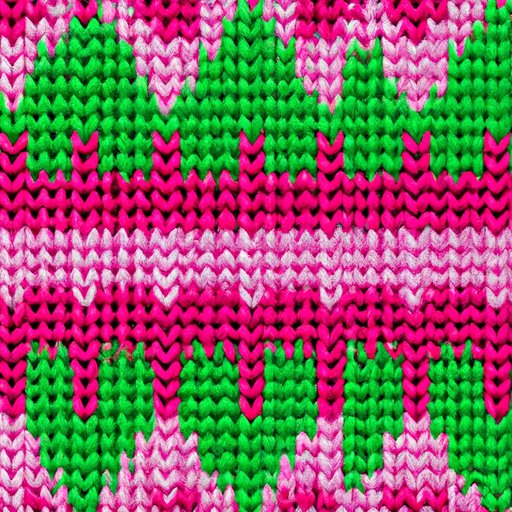
Joining for Knitting in the Round: A Comprehensive Guide for Knitters
Knitting in the round can be an excellent way to create seamless, beautiful projects. However, joining for knitting in the round can be a bit tricky, especially for beginners. Fortunately, with a comprehensive guide to joining for knitting in the round, you can master this technique and create beautiful projects with ease.
Get Started with Knitting in the Round: A Beginner’s Guide
Before diving into joining for knitting in the round, it’s essential to understand knitting in the round itself. Rather than knitting back and forth on straight needles, knitting in the round involves continuously knitting in a circular pattern. This technique creates a seamless, tubular shape that’s perfect for projects like hats, socks, and sleeves.
To get started with knitting in the round, you’ll need a few essential materials, including circular knitting needles, stitch markers, and your desired knitting yarn. Once you have your materials, follow this simple step-by-step guide:
- Cast on your desired number of stitches onto your circular needles.
- With the right side facing you, join the stitches, ensuring there is no twist in your work.
- Place a stitch marker at the beginning of the round.
- Begin knitting in the round, ensuring you move the stitch marker as you complete each round.
- Continue knitting until your project is complete.
- Bind off your stitches, and weave in any loose ends.
Circular Knitting Made Easy: Tips for Joining in the Round
Joining in the round is a crucial step in knitting in the round, as a poorly joined piece can result in unsightly seams. Fortunately, there are several common techniques for joining in the round, including the slip stitch join and the invisible join.
To achieve a seamless join, some essential tips to keep in mind include:
- Ensuring your stitches are not twisted when you join them.
- Using stitch markers to help you keep track of the beginning of the round.
- Keeping your tension consistent throughout your project.

Mastering the Magic Loop: A Comprehensive Tutorial
The magic loop technique is an excellent alternative to traditional circular knitting, as it allows you to knit smaller pieces with just one long circular needle. This technique involves using a long circular needle, typically 32 inches or longer, to loop your needle in the middle and slide your stitches onto either side of the loop.
To master the magic loop technique, follow these simple steps:
- Cast on the required number of stitches and divide them in half, placing half on either side of the loop.
- Slide the stitches onto the needle tips, ensuring they are not twisted.
- Using the working needle, place a stitch marker at the beginning of the round.
- Begin knitting, sliding the loop back and forth as needed.
- Continue knitting until your project is complete.
- Bind off your stitches, and weave in any loose ends.
The magic loop technique is an excellent option for knitters who do not have access to multiple circular needles or prefer a more compact knitting experience.
Joining in the Round: Tricks and Techniques for Seamless Knitting
A seamless join is a hallmark of a well-executed knitting project. To achieve a seamless join, there are various tricks and techniques to keep in mind, including:
- Twisted German cast on: a stretchy cast on that creates a uniform edge.
- Kitchener stitch: a method of joining two pieces of knitting together seamlessly.
- Slipping the last stitch: creates a neat edge and can prevent gapping.
Additionally, it’s essential to keep your tension consistent throughout your project, as uneven tension can result in unsightly joins.
From Flat to Round: Converting Knitting Projects to Circular
One of the most significant benefits of knitting in the round is the ability to create seamless projects. However, this can pose a challenge when converting traditional flat projects, such as scarves or mittens, to circular patterns.
To convert a flat knitting project to circular, follow these simple steps:
- Determine the circumference of the project and the appropriate number of stitches to cast on.
- Divide your stitches evenly onto your circular needle.
- Begin knitting in the round, ensuring you keep track of your beginning of the round marker.
- Continue knitting until your project is complete.
- Bind off your stitches, and weave in any loose ends.
Converting flat knitting to circular can be a bit of a learning curve, but it can significantly expand your knitting possibilities.
Round and Round We Go: Common Mistakes to Avoid While Joining in the Round
Joining in the round can be a bit tricky, and there are several common mistakes to avoid, including:
- Twisted stitches
- Uneven tension
- Gapping at joins
To avoid these mistakes, it’s essential to make sure your stitches are not twisted when joining and to maintain consistent tension throughout your project. Additionally, practice makes perfect, so don’t be afraid to try, fail, and try again.
Taking Your Knitting to the Next Level: Advanced Joining Techniques for Circular Knitting
Once you’ve mastered the basics of joining for knitting in the round, you may want to explore more advanced techniques. For example, using a provisional cast-on and grafting your stitches together can create a seamless, nearly invisible join.
Another advanced technique to consider is the jogless join, which involves slightly altering your stitch pattern to avoid a noticeable seam when changing colors or starting a new round.
Conclusion
Joining for knitting in the round can be a bit intimidating for beginners, but with a comprehensive guide and practice, it’s a technique anyone can master. Remember to take your time and work carefully, keeping an eye out for common mistakes and utilizing tips and tricks to achieve a seamless join. With these skills under your belt, you’ll soon be creating beautiful, seamless projects and taking your knitting to the next level.




